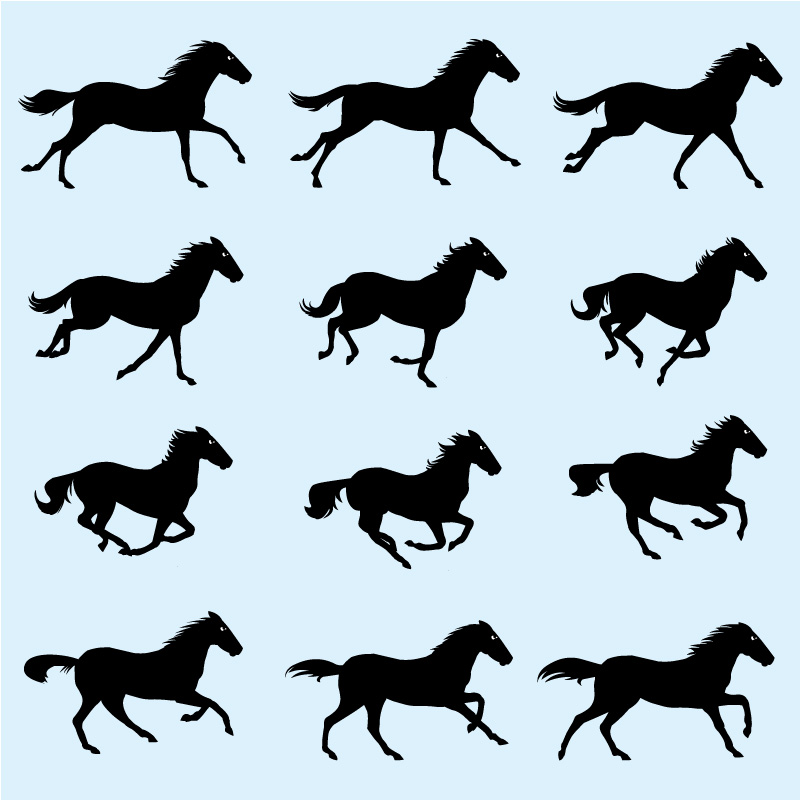 In the 1870s advances in photography made it possible to capture rapid movement. Eadweard Muybridge was the first to do so. His instantaneous photos of animal and human movements created a sensation because they captured aspects of movement never before seen by the eye alone.
In the 1870s advances in photography made it possible to capture rapid movement. Eadweard Muybridge was the first to do so. His instantaneous photos of animal and human movements created a sensation because they captured aspects of movement never before seen by the eye alone.
Visual artists took notice. The painter Frederic Remington simply incorporated Muybridge’s images into his paintings of galloping horses. Other artists, such as the sculptor Auguste Rodin, claimed that Muybridge’s photos gave the appearance of someone suddenly stricken with paralysis, destroying the illusion of movement.
From the beginning, artists and others who want to study and represent movement have had an uneasy relationship with technology. Find out why in the next blogs.
